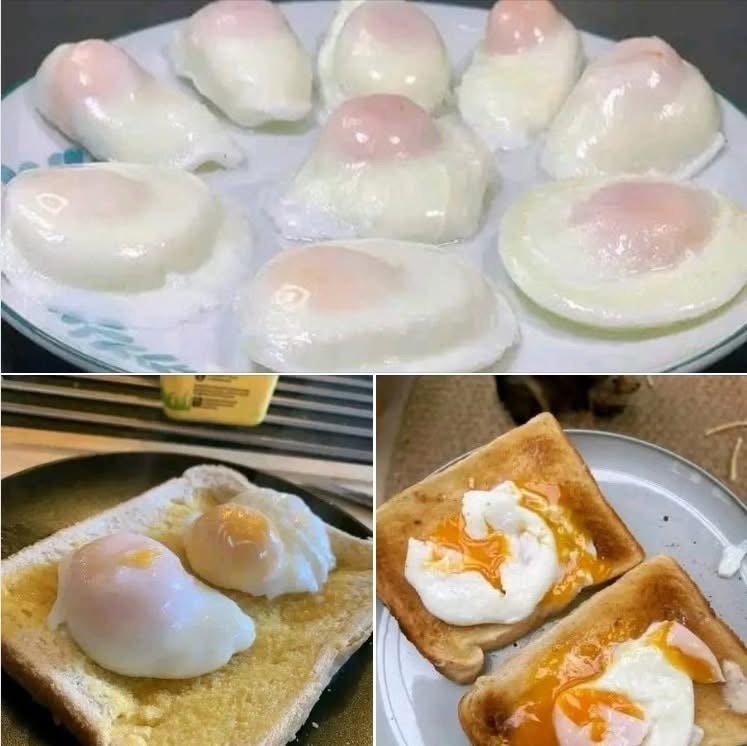Poached Eggs on Toast The Ultimate Recipe Guide

Introduction
Poached eggs on toast is a beloved breakfast and brunch classic that combines simplicity with elegance. With its rich, runny yolk and soft, pillowy whites served atop crispy, buttery toast, this dish is both nutritious and deeply satisfying. Whether you’re a seasoned foodie or a beginner in the kitchen, mastering poached eggs is a culinary rite of passage.
Ingredients
For Poached Eggs:
- Fresh eggs (as many as needed)
- 1 tablespoon vinegar (white or apple cider)
- Water (enough to fill a saucepan)
For Toast:
- Slices of bread (white, wholegrain, sourdough – your choice)
- Butter or margarine (optional, for spreading)
Optional Toppings:
- Avocado slices
- Salt and pepper
- Chili flakes
- Smoked salmon
- Spinach
- Cheese
- Hollandaise sauce
Instructions & Method
Step-by-Step Poached Egg Method:
- Boil the Water:
- Fill a saucepan with water (about 3 inches deep).
- Bring to a gentle simmer (not a rolling boil).
- Add Vinegar:
- Add 1 tablespoon of vinegar to help the egg whites firm up faster.
- Crack the Egg:
- Crack an egg into a small bowl or ramekin (this helps with gentle transfer).
- Create a Whirlpool:
- Stir the simmering water to create a gentle whirlpool in the center.
- Drop the Egg In:
- Gently slip the egg into the center of the whirlpool.
- Poach the Egg:
- Cook for 3 to 4 minutes for a runny yolk.
- Use a slotted spoon to remove it carefully.
- Dry the Egg:
- Place on a paper towel to drain excess water.
Toast Method:
- Toast your preferred bread to golden brown.
- Spread butter or margarine while warm.
- Place the poached egg(s) on top.
- Season with salt, pepper, and any other toppings you love.
Formation (Science Behind Poached Eggs)
Poaching is a gentle cooking method using low heat and water. The vinegar helps coagulate the egg white faster without dispersing into the water. Fresh eggs are crucial—they have firmer whites that hold shape better.
History of Poached Eggs
The technique of poaching eggs has been used for centuries and is popular in many cultures. In French cuisine, it’s part of “œufs pochés,” often served with hollandaise in Eggs Benedict. In Middle Eastern and Mediterranean regions, variations are seen in dishes like shakshuka. It’s a staple in British and Australian breakfasts too.
Nutritional Benefits (per 1 egg with toast)
- Calories: ~150–200 kcal
- Protein: ~8–10g
- Fat: ~7g (mostly healthy fats if butter/avocado added)
- Carbs: ~12–20g (from toast)
- Rich in: Vitamin D, B12, choline, and healthy omega-3s
Health Benefits
- Great source of complete protein
- Helps with muscle repair and brain function
- Supports eye health due to lutein and zeaxanthin in egg yolks
- Promotes satiety and weight management
- Can be part of a heart-healthy diet when paired with whole grains and veggies
Why People Love Poached Eggs (Lovers of the Dish)
Foodies, health enthusiasts, athletes, and brunch lovers all adore poached eggs for different reasons:
- Foodies love the aesthetic and texture.
- Health buffs love the nutrition.
- Athletes enjoy the high-protein content.
- Romantics—yes, even lovers—serve this on breakfast-in-bed trays!
Conclusion
Poached eggs on toast may seem simple, but it’s a dish layered in culinary tradition, nutrition, and universal appeal. Whether you like yours soft and runny or firm and yolky, there’s no denying that the humble poached egg is a breakfast champion.